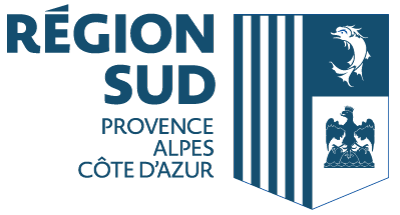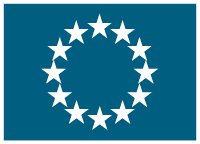Geo-sanitation - evapotranspiration of sewerage waters
(GEOASSEV)
Date du début: 6 mars 2001,
Date de fin: 15 avr. 2003
PROJET
TERMINÉ
Background
The goal of the project was to demonstrate the feasibility and reliability of an innovative individual or semi-collective wastewater treatment system for small seasonal or permanent communities in sensitive coastal areas.
The demonstration was to be carried out in the Languedoc-Roussillon region, where tourism generates high population concentrations in a critical area which is of vital importance for the whole of the Mediterranean.
Given this context, it is essential to restore and preserve the functional role of the natural area as well as to restore or maintain the quality of surface and ground water.
The project was to be carried out by the REEVANVER association in cooperation with la Société d'Ingénierie pour l'Eau - SIEE consultancy.
Objectives
The aim of the project was to give an insight into the way the GEOASSEV sanitation system works and its impact on the environment. It would also provide the basis for defining the systemâs sizing rules and transferability criteria.
More generally the project objective was to demonstrate the reliability and efficiency on a new, individual or semi-collective water sewage treatment system developed for small permanent or seasonal communities located on fragile shores.
The expected result was the generalisation of the technique over the coastal Mediterranean areas with the objective of contributing to:
- the improvement of surface water quality from the physico-chemistry (eutrophisation) and bacteriological (bathing) point of view,
- the preservation of natural water resources by using recycled sewage water for the irrigation of public open spaces,
- the reduction of "anthropised" spaces.
More specifically, the project was to include:
- a scientific and technical assessment of the geo-sanitation/evapo-transpiration system
- based on the existing equipment at a seaside camping site which accommodates 6000 people per day during the summer season.
- the adaptation, installation, monitoring and evaluation of the system in other types of construction (small housing estates, rural guest houses, B&B)
- system assessment with respect to current regulations
- preparation of a methodological guide
- public relations and information.
Tests would be performed on various combinations of sewage effluents, soil types, ground water, climate, and evapo-transpiration.
Results
The project was divided into five phases :
1. The scientific and technical definition of the geosanitation-evapotranspiration system on the basis of the existing situation (system installed in a shore-line campsite hosting 5,000 people/day during the summer season) originally approved by the Conseil Départemental d'Hygiène but out of conformity with the technical provisions in force today,
2. The adaptation, installation, monitoring and evaluation of the system in different environments (small housing estates with individual dwellings located in urban coastal areas, rural guest houses in the inland areas of the coastal zone),
3. Validation of the system with regard to the present regulations, to the orientation of future legislation and other initiatives planned by the EU legislators in Europe and the coastal areas of the Mediterranean Basin,
4. Preparation of a methodological guide describing the environmental contexts for which the system has competitive environmental advantages as well as the practical modalities to evaluate these contexts,
5. Dissemination of information, during and after the project (Internet Web Page, international euro-Mediterranean symposium, on-site pilot units for the training and awareness of the public at large). The prototype is tested for different types of sewage effluents and geological structures, for existing and various types of underground water, climate and evapotranspiration.
The description of the system is as follows:
Sewerage arrives in a septic tank of 3 m3 for pre-treatment; after this first step the wastewater goes through a drain pipe of 100 mm diameter with side vents. The pipe is on the wide trench (0,9 to 0,8 metres) with rough gravel of 20-80 mm in diameter, these characteristics help prevent roots from invading the drains. The gravel bank acts as a buffer stock and lets water feed into the soil for plant use. Tree, shrubs and other plants, planted at between 0,5 and 3 metres from the drain axis, develop their growth by drawing on interstitial water in the soil and nutrients from the infiltration trenches.
This method operates as a result of two natural phenomena:
- Purification by soil filtering: the soil is both a physicochemical filter and the habitat of biomass which degrades oxidisable pollutants, traps nutrients and partially or wholly eliminates the pathogenic germ populations contained in waste water.
- Evapotranspiration by trees: evapotranspiration is a natural phenomenon whereby the matter in the earth returns to the atmosphere via direct evaporation and plant transpiration. It lowers the moisture level and boosts the self-purification capacity of the soil, and is attained by growth of vegetation which consumes a portion of the nutrients contained in wastewater. This phenomenon was not precisely quantified, the water quantity absorbed by the trees could not be measured during the project. However the water balance was deficient, as during the study period the evapotranspiration was 938 mm and supply (rain + wastewater discharge) was 734 mm. So the camp site vegetation depends on wastewater discharge for growth.
The method is now fully controlled with regard to soil, climate and waste conditions similar to those found in the Serignan Plage campsite:
- highly permeable soils (100 to 500 mm/h),
- high evapotranspiration (180 mm/month in summer),
- seasonal waste,
- no vulnerable aquifers under the site.
The methodological guide is available. It clearly presents all the system specifications.
The installation and evaluation of the system in different environments (no permeable soil or yearly use) shows that, for different conditions, to stay on the safe side in the current situation, the sizing rules used to specify the length of infiltration trenches should be those of conventional geo-sanitation. In these cases, the vegetation comes into play solely as the consumer of wastewater products and incidentally as a component of a sanitation system determined by its size.
This technique falls within the scope of sustainable development:
- Environmental protection: waterways, lake, ponds, etc. are protected (no waste reaches the upper levels), water resources are husbanded (wastewater use for irrigation), space is saved (installations are integrated into the park and pathway areas), plant life develops and dwellings blend into the landscape.
- Economic development: the technique is particularly well-suited to the development of inhabited areas in warm climates. It does not require power consumption and its investments costs are low in comparison with collective sanitation systems for small communities, especially isolated ones.
- Social development: it is a technique within the scope of communities with limited technological facilities.
The dissemination actions enabled contact to be established with a Spanish University and Moroccan public authority. A proposal for adapting the system to a school was drawn up after a mission held in Morocco.
In addition, the project was selected to be presented to the 3rd world water forum in Kyoto (Japan) in March 2003.
A summary of the project's results was published in 2005, in the LIFE Focus publication: "LIFE-Environment 1992-2004 - Demonstrating excellence in environmental innovation". It showed that on closure (April 2003), the project had achieved the following sustainable development results:
1. Environmental protection - waterways, lake, ponds, etc. were protected (no waste reached the upper levels), water resources were re-used (wastewater use for irrigation), space was saved (installations were integrated into the park and pathway areas), plant life developed and buildings blended into the landscape.
2. Economic development - the technique proved particularly well-suited to the development of inhabited areas in warm climates (it doesnât require power consumption and its investment costs are low in comparison with collective sanitation systems for small, isolated communities).
3. Social development - it also proved to be a technique well within the scope of communities with limited technological facilities.
Also in 2003, the project team produced a series of brochures, in French: âMethodology Guideâ, âGEOASSEV, a rustic method for purifying domestic wastewater combining infiltration and evapotranspirationâ; and the âWorkshop programme: wastewater treatment and valorisation in tourist area. For more information, see the project website (English and French), which remains open at: http://www.reevanver.org/.




